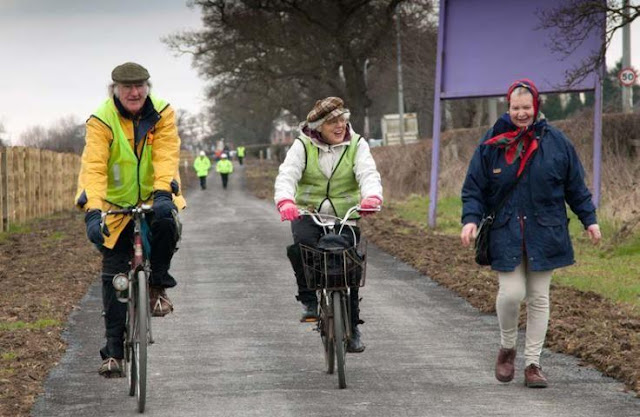Lately, I've had to ask neighbors and friends not to wave or call me when I'm riding down the Crescent Street bike lane, which takes me directly to my door. I've explained that for almost any ride I take--whether it's to run errands on Steinway Street or to Connecticut or Point Lookout--the Crescent Street lane is the most dangerous stretch. It's less than three meters wide--for bicycles, e-bikes, mini-motorcycles, motorized scooters and pedestrians, sometimes accompanied by their dogs, who wander into it while looking at their phones.
The thing is, unless I'm crossing Crescent Street from 31st Road, the lane is the only way I can get to my apartment. There is simply no room between the traffic lane and parked cars on the west side of the street or the parked cars and traffic to the east side, where I live. Before the lane was constructed, I could maneuver my way through traffic, which can be heavy as the street is one of the main conduits between the RFK/Triborough and 59th Street/Queensborough Bridges. Then again, I am a very experienced cyclist and didn't have to contend with the scooters, e bikes and other motorized forms of transportation.
In addition, and a couple of blocks up from me is Mount Sinai-Queens Hospital and the ambulances and other vehicles that embark and return. Furthermore, there has been residential construction along Crescent, so trucks are all but continuously pulling in our out of, or parking in, the lane. Oh, and even when there's traffic, some drivers still seem to think Crescent Street is the local version of Daytona or Indy--whether they're young men who just want to drive fast and make noise or commuters or other drivers who want to beat the traffic jams on the 59th Street Bridge or the Brooklyn-Queens Expressway.
So, I would tell anybody who doesn't need to use the lane--as I do--to stay away. It was poorly conceived and constructed and, to be fair, when it opened--early in the COVID-19 pandemic--nobody could've anticipated the explosion of e-bikes, scooters and other motorized conveyances.
Mind you, the Crescent Street lane doesn't share some of the defects I've seen in other bike lanes in this city and country. It is clearly marked and relatively easy to access from the RFK/Triborough Bridge. The transition from the end of the lane to the 59th Street/Queensborough Bridge, or the local streets around Queensborough Plaza, could be better, but is still better than others I've ridden.
In light of everything I've said, I must say that I can't blame Bike Cleveland for advising local cyclists not to use the new Lorain Avenue bike lane. According to BC. the lane, near the Lorain-Carnegie Bridge, "is short-lived, and quickly disappears and drops riders into the sharrow (shared)lane that has existed there for years." The bridge BC notes, is "well known as a haven for speeding motorists on the move to make the highway connection at the other end."
I've never been to Cleveland, but that sounds very familiar to me.





















